
The coat of arms of the Argentine Republic or Argentine shield was established in its current form in 1944 but has its origins in the seal of the General Constituent Assembly of 1813. It is supposed that it was chosen quickly because of the existence of a decree signed on February 22 sealed with the symbol. The first mention of it in a public document dates to March 12 of that same year, in which it is stated that the seal had to be used by the executive power, that is, the second triumvirate. On April 13 the National Assembly coined the new silver and gold coins, each with the seal of the assembly on the reverse, and on April 27 the coat of arms became a national emblem. Although the coat of arms is not currently shown on flags, the Buenos Aires-born military leader Manuel Belgrano ordered to paint it over the flag he gave to the city of San Salvador de Jujuy, and during the Argentine War of Independence most flags had the coat of arms.

The coat of arms of Chile dates from 1834 and was designed by the English artist Charles Wood Taylor (1792–1856). It is made up by a figurative background divided in two equal parts: the top one is blue and the bottom, red. A five pointed white star is in the centre of the shield. This background is supported in one side by a condor, the most significant bird of prey from the Andes, and in the other, by a huemul, a mammal endemic to Chile. Both animals wear golden naval crowns symbolising the heroic deeds of the Chilean Navy in the Pacific Ocean.

The United Provinces of the Río de la Plata, earlier known as the United Provinces of South America, was a name adopted in 1816 by the Congress of Tucumán for the region of South America that declared independence in 1816, with the Sovereign Congress taking place in 1813, during the Argentine War of Independence (1810–1818) that began with the May Revolution in 1810. It originally comprised rebellious territories of the former Spanish Viceroyalty of the Río de la Plata dependencies and had Buenos Aires as its capital.
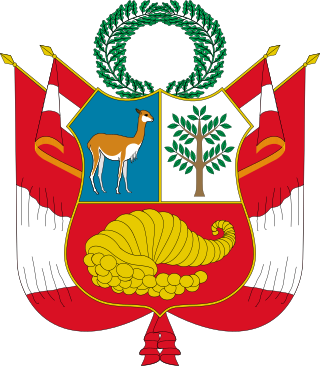
The Coat of arms of Peru is the national symbolic emblem of Peru. Four variants are used: the Coat of arms per se ; the National Coat of arms, or National Shield ; the Great Seal of the State ; and the Naval Coat of arms.
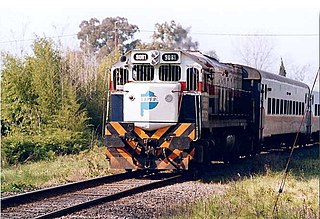
The Unidad Ejecutora del Plan Ferroviario Provincial (UEPFP) (in English: "Executive Unit of the Provincial Railway Plan"), mostly known under its trade name Ferrobaires, was a public railway company which operated extensive long-distance passenger trains throughout the Buenos Aires Province in Argentina. The company was primarily owned and funded by the Buenos Aires provincial government led by Eduardo Duhalde. The name "Ferrobaires" is a combination of the Spanish words for "Rail Buenos Aires."

The coat of arms of Buenos Aires is the official shield used by the different areas and dependencies of the Government of the city of Buenos Aires, Argentina.
The coat of arms of Toledo may refer to the City of Toledo and for the Province of Toledo.

Julián Andrés Domínguez is an Argentine Justicialist Party politician of the Justicialist Party. He was twice Minister of Agriculture, in the cabinets of presidents Alberto Fernández (2021–2022) and Cristina Fernández de Kirchner (2009–2011).

The Argentina Bicentennial was a series of ceremonies, festivals, and observances celebrated on May 25, 2010, and throughout the year. They commemorated the 200th anniversary of the May Revolution, a sequence of historical events that led to the Viceroy Baltasar Hidalgo de Cisneros being ousted from office and replaced with the Primera Junta, the first national government.

The coat of arms of Pichilemu is the official heraldic symbol representing the city of Pichilemu, the capital of the Chilean province of Cardenal Caro. It consists of a party per cross referencing the importance of tourism in Pichilemu, and the commune's agricultural, huaso origins. The coat of arms is crested with a "symbolical representation of Pichilemu's past and present: a balustrade fused in a mitre", worn by José María Caro Rodríguez, the first Cardinal of the Chilean Roman Catholic Church, who was born in the village of San Antonio de Petrel, in Pichilemu.

Argentina has a number of national symbols, some of which are extensively defined by law.
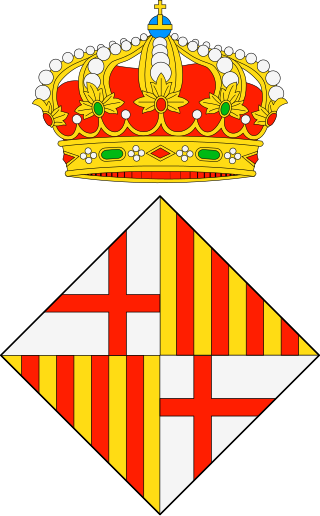
The coat of arms of Barcelona is the official emblem of the City Council of Barcelona, the capital of Catalonia, has its origin in the Middle Ages, these arms were first documented in 1329. The Government of Catalonia conferred the coat of arms and the flag as official symbols of the municipality in 2004. It has an escutcheon in lozenge which is commonly used in municipal coats of arms of cities in Catalonia. Currently the City Council of Barcelona also uses an isotype based on the heraldry of the city.

Eduardo Enrique "Wado" de Pedro is an Argentine lawyer and Justicialist Party politician who has served as National Senator since 2023. He previously served as the country's Minister of the Interior from 2019 to 2023, National Deputy for Buenos Aires Province, as member of the Council of Magistracy, and General Secretary to President Cristina Fernández de Kirchner.
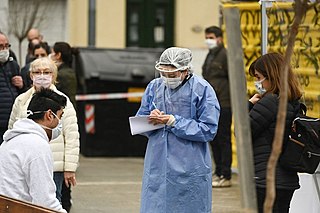
The COVID-19 pandemic in Argentina is part of the worldwide pandemic of coronavirus disease 2019 caused by severe acute respiratory syndrome coronavirus 2. As of 27 March 2024, a total of 10,090,694 people were confirmed to have been infected, and 130,587 people were known to have died because of the virus.
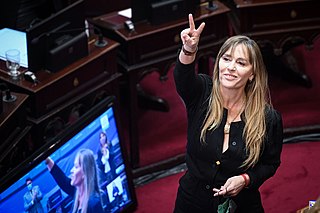
Juliana Di Tullio is an Argentine psychologist and politician. A member of the Justicialist Party, Di Tullio served three terms as National Deputy representing Buenos Aires Province, from 2005 to 2017. From 2013 to 2015, during the presidency of Cristina Fernández de Kirchner, Di Tullio was president of the Front for Victory parliamentary bloc in the lower chamber of the National Congress. She also served as a member of the Mercosur Parliament, and in the board of directors of the Banco Provincia. Since 2021, she has been a National Senator for Buenos Aires Province.

Mónica Fernanda Macha is an Argentine politician, currently serving as National Deputy representing Buenos Aires Province. A member of New Encounter, Macha was elected in 2017 for the Unidad Ciudadana coalition, and currently sits in the Frente de Todos bloc. She previously served as a member of the Provincial Senate of Buenos Aires Province.
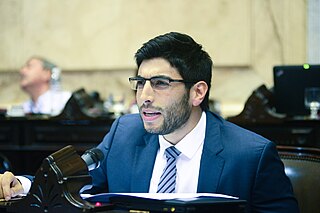
Juan Facundo Moyano is an Argentine trade unionist and politician. A member of the Party of Culture, Education and Labour (CET), Moyano was a National Deputy for Buenos Aires Province from 2011 to 2021.
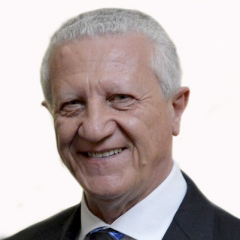
Jorge Emilio Sarghini is an Argentine economist and politician. Historically a member of the Justicialist Party, Sarghini has served in a number of political posts throughout his career, most notably as a member and president of the Buenos Aires Province Chamber of Deputies, as Minister of Economy of Buenos Aires Province during the successive administrations of Eduardo Duhalde and Carlos Ruckauf, and briefly as Secretary of Communications during Duhalde's interim presidency in 2002.

Avanza Libertad, originally founded in 2019 as Frente Despertar, was an Argentine right-wing political coalition. Renamed in 2020, Avanza Libertad had legal status in the Buenos Aires Province. Ideologically, it is libertarian conservative, supportive of economic liberalism, ultraconservatism, and critical of both Kirchnerism and Juntos por el Cambio. Led by José Luis Espert, is a far-right coalition, with its being compared to Spain's Vox.


















